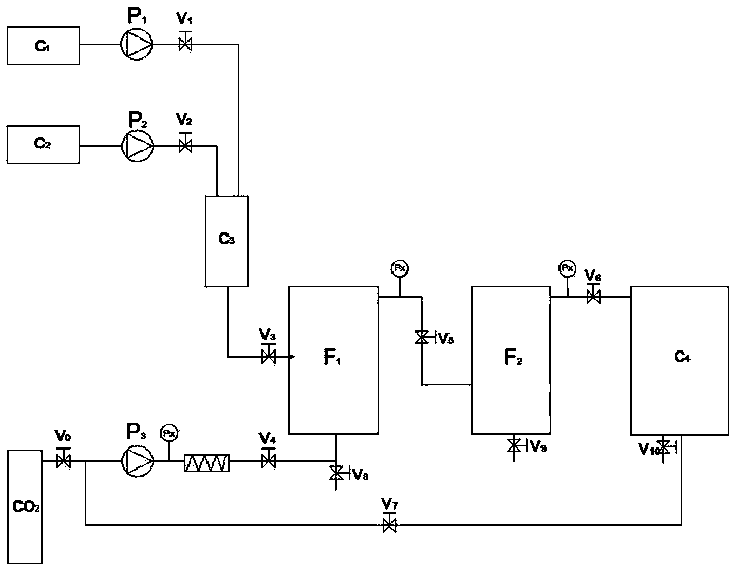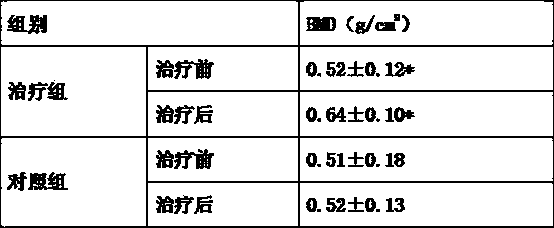Preparation method and application of rabdosia rubescens nanoparticles
A technology of nano-particles and Rubescens, applied in medical preparations, pharmaceutical formulations, plant raw materials and other directions containing active ingredients, can solve the problems of human and environmental hazards, small production volume, high noise, etc., and achieve high safety, High bioavailability, enhanced proliferative response
- Summary
- Abstract
- Description
- Claims
- Application Information
AI Technical Summary
Problems solved by technology
Method used
Image
Examples
Embodiment 1
[0026] A preparation method of Rubescens chinensis nanoparticles includes the following steps:
[0027] (1) Mix the rubescens and deionized water at a ratio of 1:1, then reflux and extract for 60 minutes under heating at 95°C, filter while hot, repeat the above operation once for the filter residue, and combine the filtrate;
[0028] (2) The filtrate obtained in step (1) is concentrated to 50% of the original volume by vacuum distillation at 70°C;
[0029] (3). After the concentrate of step (2) is decolorized by activated carbon and deproteinized by sevage method, it is adjusted with 95% ethanol to the concentration of 55% ethanol in the solution, and left standing at low temperature for 12 hours, and centrifuged to obtain precipitation I and supernatant liquid;
[0030] (4) Adjust the supernatant obtained by centrifugation in step (3) with 95% ethanol to an ethanol concentration of 65% in the solution, leave it at low temperature for 12 hours, and centrifuge to obtain precipitation I...
Embodiment 2
[0039] A preparation process of Rubescens chinensis nanoparticles includes the following steps:
[0040] (1) Mix the rubescens and deionized water at a ratio of 1:10, then reflux and extract for 120 minutes under heating at 80°C, filter while hot, repeat the above operation once for the filter residue, and combine the filtrate;
[0041] (2) The filtrate obtained in step (1) is concentrated to 10% of the original volume by vacuum distillation at 80°C;
[0042] (3), decolorize the concentrated solution of step (2) by activated carbon, sevage method 【1】 After deproteinizing, adjust with 95% ethanol to the concentration of ethanol in the solution at 55%, let stand at low temperature for 12 hours, and centrifuge to obtain precipitation I and supernatant;
[0043] (4) Adjust the supernatant obtained by centrifugation in step (3) with 95% ethanol to an ethanol concentration of 65% in the solution, leave it at low temperature for 12 hours, and centrifuge to obtain precipitation II and supernat...
Embodiment 3
[0052] A preparation method of Rubescens chinensis nanoparticles includes the following steps:
[0053] (1) Mix the rubescens and deionized water at a ratio of 1:20, then reflux and extract for 180 min under heating at 70°C, filter while hot, repeat the above operation once for the filter residue, and combine the filtrate;
[0054] (2) The filtrate obtained in step (1) is concentrated to 10% of the original volume by vacuum distillation at 90°C;
[0055] (3), decolorize the concentrated solution of step (2) by activated carbon, sevage method 【1】 After deproteinizing, adjust with 95% ethanol to the concentration of ethanol in the solution at 55%, let stand at low temperature for 12 hours, and centrifuge to obtain precipitation I and supernatant;
[0056] (4) Adjust the supernatant obtained by centrifugation in step (3) with 95% ethanol to an ethanol concentration of 65% in the solution, leave it at low temperature for 12 hours, and centrifuge to obtain precipitation II and supernatant; ...
PUM
 Login to View More
Login to View More Abstract
Description
Claims
Application Information
 Login to View More
Login to View More - R&D
- Intellectual Property
- Life Sciences
- Materials
- Tech Scout
- Unparalleled Data Quality
- Higher Quality Content
- 60% Fewer Hallucinations
Browse by: Latest US Patents, China's latest patents, Technical Efficacy Thesaurus, Application Domain, Technology Topic, Popular Technical Reports.
© 2025 PatSnap. All rights reserved.Legal|Privacy policy|Modern Slavery Act Transparency Statement|Sitemap|About US| Contact US: help@patsnap.com



